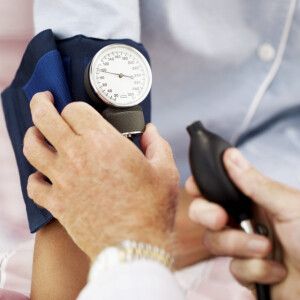by
Brendon Nafziger, DOTmed News Associate Editor | July 08, 2010

Study could 'profoundly
affect' hypertension treatment.
Patients with hard-to-treat high blood pressure who tweak their medication schedules after self-monitoring saw on average a nearly 50 percent greater drop in systolic blood pressure than those receiving typical office-based care, according to the results of a new trial.
The decline represents a drop in blood pressure associated with a 20 percent reduction in risk for stroke and a 10 percent reduction in risk for heart disease, according to the study, appearing online Thursday in the British journal The Lancet.
The results are in line with research on asthma and diabetes that self-monitoring works best when it encourages self-adjustment of medications, the authors said, and could "profoundly affect the way we treat patients with uncomplicated hypertension," in the words of one researcher.



Ad Statistics
Times Displayed: 79227
Times Visited: 2801 Ampronix, a Top Master Distributor for Sony Medical, provides Sales, Service & Exchanges for Sony Surgical Displays, Printers, & More. Rely on Us for Expert Support Tailored to Your Needs. Email info@ampronix.com or Call 949-273-8000 for Premier Pricing.
Patients taking frequent blood pressure readings likely saw their blood pressure drop because they increased blood pressure lowering medications, such as certain calcium antagonist drugs, while following a predetermined, but self-administered, plan, called a titration schedule.
"This study shows that self-management of hypertension, consisting of regular self-measurements of blood pressure and a simple predetermined titration plan for anti-hypertensive drugs, is more effective in lowering systolic blood pressure than is usual care during one year," wrote the authors, led by Richard J. McManus, a professor at the Primary University of Birmingham in the United Kingdom.
The randomized controlled trial, dubbed the Telemonitoring and Self-Management of Hypertension Trial, or TASMINH2, tracked 527 participants aged 35 to 85 over the course of a year. All patients had blood pressure higher than 140/99 mm Hg despite being on blood pressure lowering medication.
About half the patients were randomly assigned to the self-monitoring group, and trained with two sessions to monitor their own blood pressure with an automated pressure-reading cuff called a sphygmomanometer, made by Omron Healthcare Europe.
Patients took blood pressure readings twice every morning for the first week each month throughout the study. Patients classified their readings "red" if they were unsafe, "yellow" if they were above treatment targets but not dangerously so, and "green" if they were in the healthy range, safely below targets set by the UK National Institute for Health and Clinical Excellence.
If average weekly readings for two consecutive months exceeded 130/75-85 mm Hg, patients adjusted their medications according to the titration schedule they worked out beforehand with their doctor.

